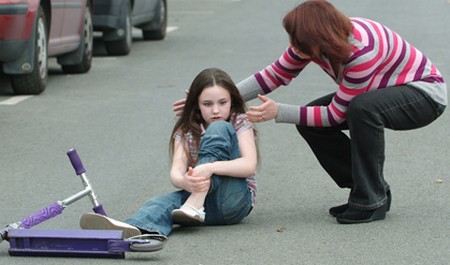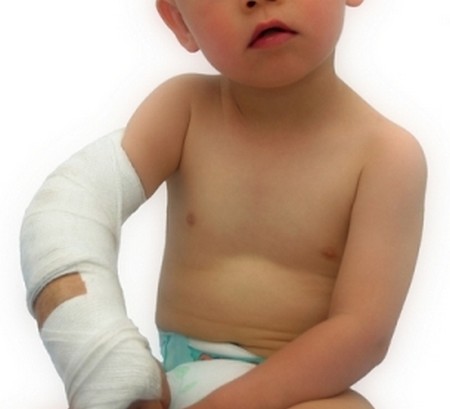Best Way to Help Your Child to Deal with Fractures
A fracture is a partial or complete break of a bone. If the bone is cracked on one side and buckled on the other, it’s known as a greenstick fracture. These are common in children’s limb bones and usually heal quickly.
What to look for
A fracture is obvious if the bone is floppy or if it’s poking through a wound in the skin, when it’s known as an open fracture.
Suspect a fracture if the injury is painful, tender, swollen or bruised, if the child can’t move the part at all, if movement is restricted or if the pain is worse when the child moves. Sometimes, however, a child with a fractured bone only has slight discomfort.
What you can do
Don’t move the child, if it can be avoided, particularly if there is any possibility of a fractured back, neck or pelvis.
- If you suspect a fractured skull and there is a discharge from the ear, turn the child so that side is down.
- If you suspect anyfracture:
- Check whether the child is breathing, has a heartbeat, is bleeding or is shocked, and treat accordingly.
- Telephone for an ambulance.
- Don’t give anything to eat or drink.
- Keep the injured part as still as possible to avoid damage from the broken ends of bone.
- Gently smooth some comfrey (knitbone) ointment into the skin over the injured part to aid healing.
- If you have to move the child, first immobilize the joints above and below the injured part. If you don’t have bandages and slings you can improvise with scarves, tights, ties and torn fabric. Anything used to cover an open wound must be clean and preferably sterile.
For a fractured elbow: if bent, treat like a broken arm; if straight, put soft padding between the arm and trunk, and bandage the whole arm to the body.
For broken ribs: support the arm on the injured side in a sling.
For a broken ankle or foot: Support the leg in a raised position to reduce swelling.
For a fractured leg: put soft padding between the legs, then bandage the injured leg to the good one, avoiding binding over the break.
For a broken arm: place soft padding between the arm and chest, and support the arm in a sling. Secure the arm comfortably to the chest with a broad bandage across the sling.
Categories
Advertisements
Recent Articles
 How to Understand Bed Sizes – A Small Guide
How to Understand Bed Sizes – A Small Guide How to Select Some Must Have Kitchen Accessories
How to Select Some Must Have Kitchen Accessories Best Way to Change a Car Tire
Best Way to Change a Car Tire Best Way to Write an Affirmation
Best Way to Write an Affirmation Best Way to Take Charge of Your Financial Life
Best Way to Take Charge of Your Financial Life Best Way to Survive a Party When You Don’t Know Anyone
Best Way to Survive a Party When You Don’t Know Anyone Best Way to Stop Self Sabotaging Yourself
Best Way to Stop Self Sabotaging Yourself Best Way to Start Journal Writing
Best Way to Start Journal Writing Best Way to Speak with a Powerful Voice
Best Way to Speak with a Powerful Voice Best Way to Simplify Your Life
Best Way to Simplify Your Life Best Way to Respond to a Put-Down
Best Way to Respond to a Put-Down Best Way to Reduce Acne Breakouts
Best Way to Reduce Acne Breakouts Best Way to Recover from Dining Disasters
Best Way to Recover from Dining Disasters Best Way to Quit Your Job Gracefully
Best Way to Quit Your Job Gracefully Best Way to Make Your Own Website
Best Way to Make Your Own Website



Leave a Reply